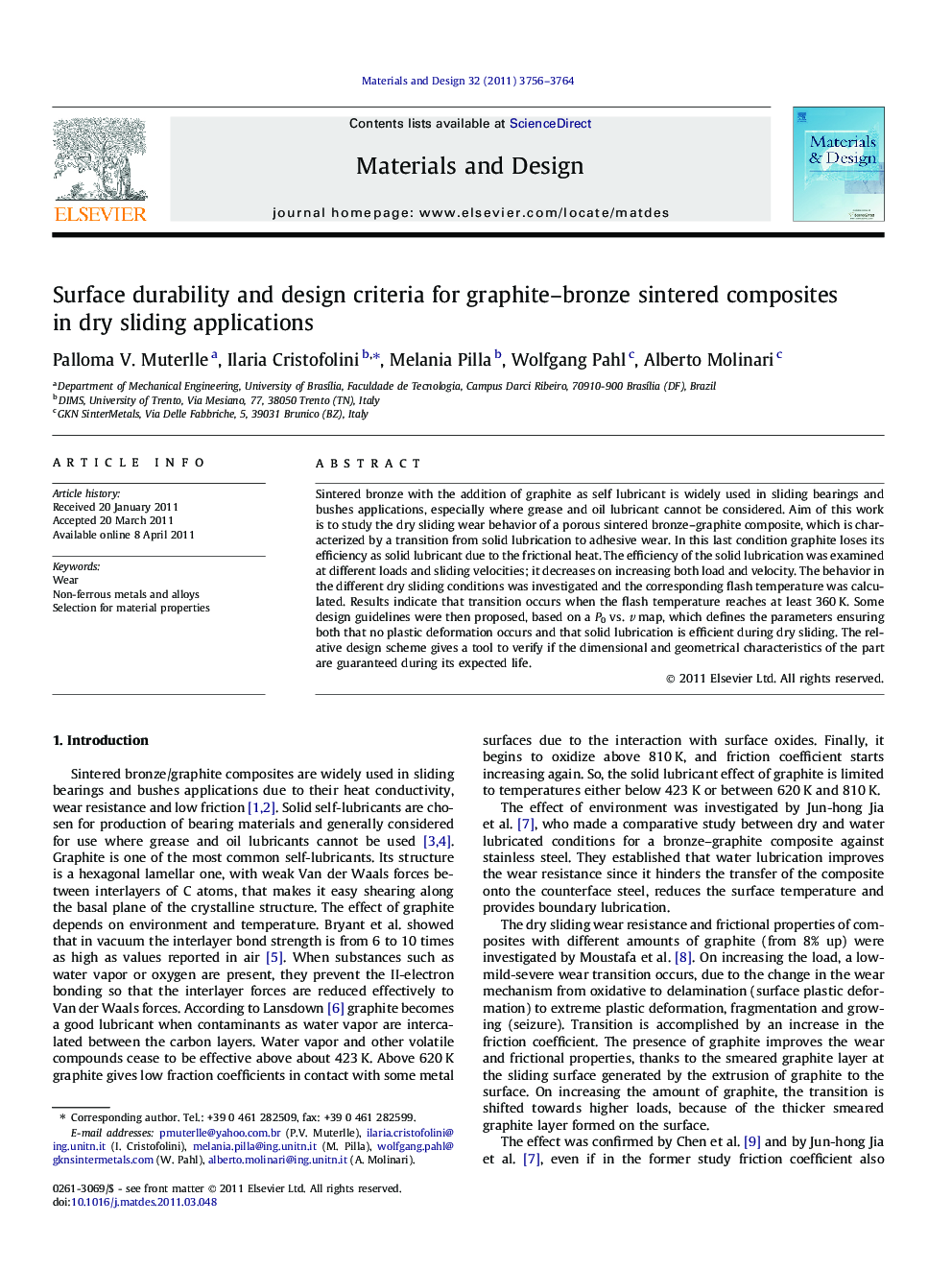| Article ID | Journal | Published Year | Pages | File Type |
|---|---|---|---|---|
| 831499 | Materials & Design (1980-2015) | 2011 | 9 Pages |
Sintered bronze with the addition of graphite as self lubricant is widely used in sliding bearings and bushes applications, especially where grease and oil lubricant cannot be considered. Aim of this work is to study the dry sliding wear behavior of a porous sintered bronze–graphite composite, which is characterized by a transition from solid lubrication to adhesive wear. In this last condition graphite loses its efficiency as solid lubricant due to the frictional heat. The efficiency of the solid lubrication was examined at different loads and sliding velocities; it decreases on increasing both load and velocity. The behavior in the different dry sliding conditions was investigated and the corresponding flash temperature was calculated. Results indicate that transition occurs when the flash temperature reaches at least 360 K. Some design guidelines were then proposed, based on a P0 vs. v map, which defines the parameters ensuring both that no plastic deformation occurs and that solid lubrication is efficient during dry sliding. The relative design scheme gives a tool to verify if the dimensional and geometrical characteristics of the part are guaranteed during its expected life.
► We studied the solid lubrication of graphite in sintered bronze–steel dry sliding. ► We correlated the endurance of solid lubrication to the contact stresses. ► We proposed a wear model based on the flash temperature of the surfaces. ► The limits for the model validity have been calculated. ► We proposed design guidelines for dry sliding wear of graphite–bronze composites.
